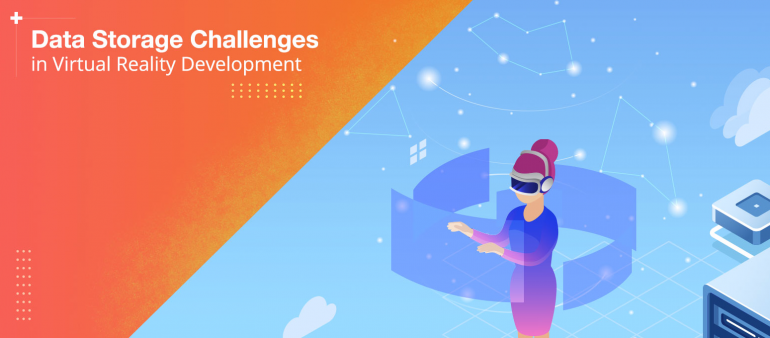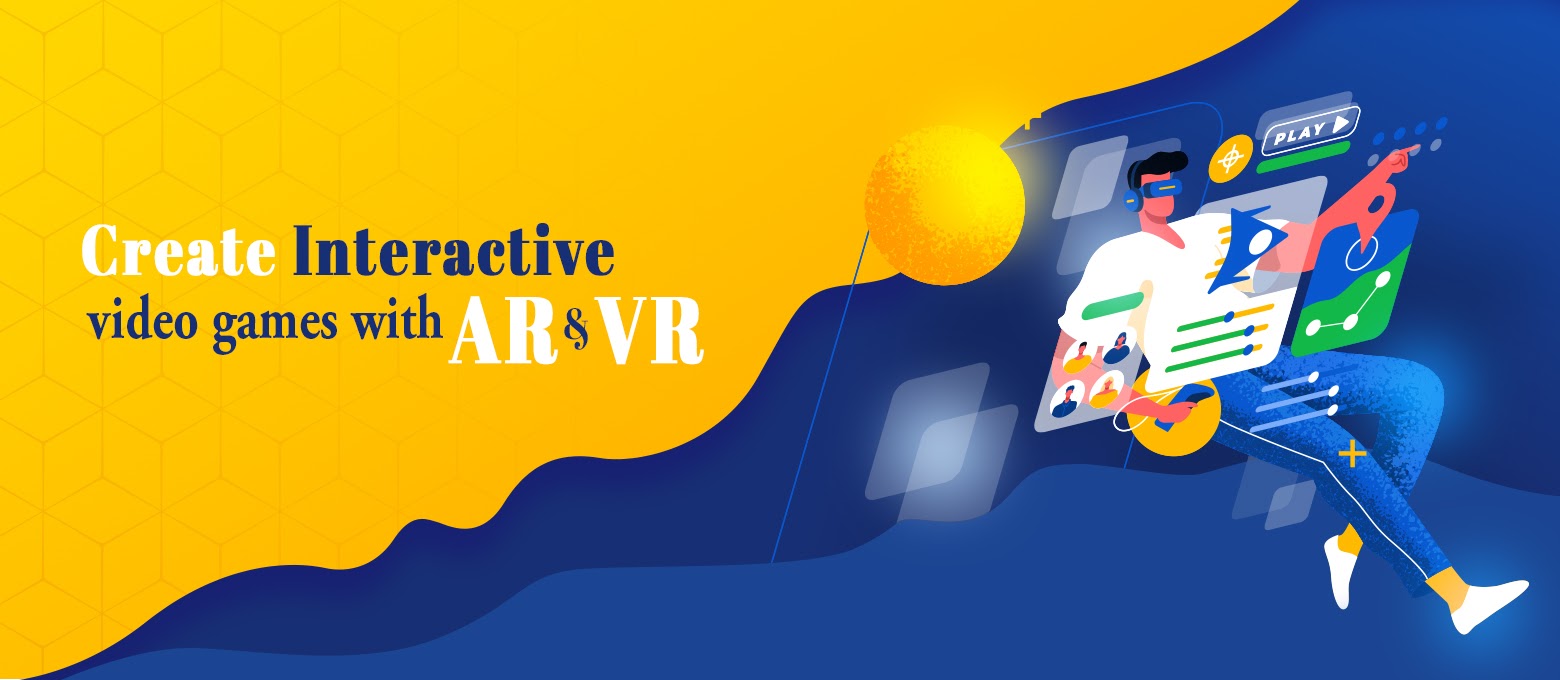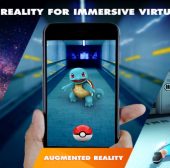Virtual reality (VR) is no longer a new concept and we are already witnessing its incredible potential in industries like healthcare, retail, education, real estate, transport and gaming. Although aviation and entertainment were the first ones to adopt virtual reality development, it is now quickly coming to the mainstream with endless opportunities across various industries. Many VCs and companies are also seeing virtual reality development space as a hot destination for investments. The VR funding in 2019 stood at $2.4 bn and the global VR market size was valued at $10.32 billion. There’s no doubt that virtual reality development is quickly becoming commercially viable, but it is also presenting a massive challenge of dealing with the endless, enormous data files being created by VR platforms. This brings me to shed light on the reality of information storage in virtual reality development.
Data and Information Storage Challenges in Virtual Reality Development
A typical interactive VR application can generate about one terabyte of data per hour, which is the equivalent of approximately 200,000 songs and 17,000 hours of music (assuming the size of one song is 5 MB). Storing such huge piles of VR data is a big and expensive task. Cloud may not be a practical solution for storing VR content as there is a constant need for retrieving, editing and enhancing VR data based on user interactions. Any delay in data access will hamper the user experience and break the immersion because of hiccups and outright loading freezes. Slow-loading or lag-heavy experiences not just frustrate users, but also pose the risk of motion sickness due to disorientation or other motion-induced conditions. Also, the initial cost of the cloud is nominal, but recurring cost increases sharply as data volumes grow. The cost of recalling data from the cloud also goes on a higher side when we take into consideration the type of files as large as VR.
One of the best ways to store VR data is to find a solution that makes it possible for companies to access and tinker with the files as per their needs. Plus, it should also allow to archive VR data files economically in order to protect and store the data for as long as needed. VR developers can achieve this by following a two-tier system approach, with network-attached storage (NAS) on the front end, and tape storage on the backend. This system not just significantly cuts storage costs but also works perfectly for VR content. VR data can be easily accessed through tier 1 storage, such as NAS disk systems. Once the data is edited, VR developers can move it to a low-cost second-tier storage medium, such as tape. A two-tier storage infrastructure will go a long way in saving time and money for your VR business.
Also read: What goes in virtual reality game development
Solid state drives (SSDs) are considered to be the best for building VR applications as they allow for faster read/write data access. However, as SSDs are more expensive than mechanical hard disk drives (HDDs), most VR developers opt for HDDs because of far greater storage ability at a much lower cost. Yes, the cost of SSDs have started to decline, but it will still take some more time to get ahead of HDDs.
Edge computing is also a very good solution for storing VR content. As data storage technology advances and becomes less expensive, we will see more and more VR apps distributing much of their VR content away from the core of the network at the edge facilities that are closer to their end-users. Edge data centres can eliminate much of the latency issue caused by distance.
Also read: The good and the bad of Sony PlayStation VR gaming
Since VR applications are about delivering an immersive experience, it also becomes important to use the highest quality displays, especially because the screen is held so close to the user’s eyes. A typical 1080p display is good, but far from ideal for VR content. Many VR developers now use more detailed 4k displays, but 8K displays are also available in the market now. Video footage in such high resolution on 8K displays will create an even bigger challenge for network infrastructure.
It’s not an easy task to create and store 3D content for VR apps, but you can save a lot of time, money and effort by outsourcing VR game app development and 3D modeling to experts in India. That said, I would like to introduce you to Logic Simplified, a virtual reality game development studio in India, with over a decade of experience in building video games for multiple platforms.
Build Your VR Game with Logic Simplified
Our virtual reality game developers do a high level of brainstorming and have great prototyping skills. It’s very important to handle data storage issues from the beginning of VR development and we, at Logic Simplified, ensure that every time. You can hire VR game developers from us to build VR games for best technologies, such as Oculus Rift DK2, Oculus Samsung Gear VR, HTC VIVE, Google Cardboard (Mobile VR), Google Daydream VR and more. Maintaining a proper frame rate of 60 FPS is quite a challenge in VR game development as rendering is done twice for each eye perspective. If your device’s frame rate does not match with user head motion, it will cause motion sickness. Our VR developers use various optimization techniques, such as object pooling, dynamic and static batching, baked lighting, VR optimized shading and more, to provide an immersive experience of looking around, without triggering the events of motion sickness. Our developers also use specialized tools and libraries, such as gvr-unity-sdk-master (Google VR SDK)/Leap Motion Orion SDK (HTC VIVE SDK)/Unity Embedded Oculus DK2 SDK, to speed up the overall VR game development cycle. We are a reputed game app developer in India you can trust to save a lot of time and money that go in building a highly immersive VR game. Please share your VR game idea by writing to us at enquiry@logicsimplified.com, and we promise to get back to you shortly to provide you with gaming solutions we are proud of.
 Get a Quote
Get a Quote















